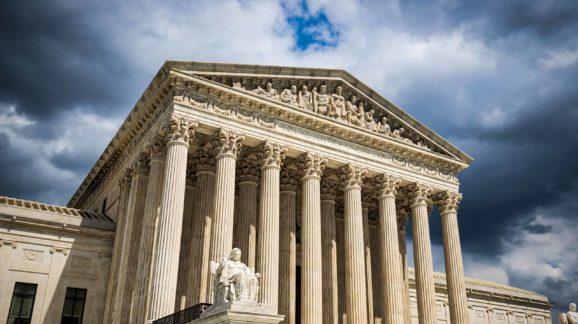The Supreme Court’s Vaccine Decisions Are a Blow to the Administrative State
The Supreme Court issued a split decision on two of the Biden administration’s Covid-19 vaccination mandates. In the first, a 6–3 majority stayed the Occupational Safety and Health Administration (OSHA) mandate requiring Covid vaccinations for workers in companies with 100 or more employees. In the second, the Court narrowly (5–4) upheld the Centers for Medicare and Medicaid Services (CMS) mandate requiring facilities that receive Medicare and Medicaid funds to ensure their staff are vaccinated.
While the result was mixed, the decisions signal that the current Court is serious about applying the Constitution’s structural separation of powers that places lawmaking authority in the Congress and not in executive-branch agencies, where the modern administrative state has increasingly placed it. When agencies do make rules affecting “the daily lives and liberties of millions of Americans,” they must, as Justice Gorsuch wrote in concurring with the OSHA decision, “be able to trace that power to a clear grant of authority from Congress.” This portends a significant and welcome decrease in the power of the administrative state.
In the OSHA case, the Court quoted its recent decision in the CDC eviction moratorium case (Alabama Association of Realtors v. Department of Health and Human Services), which, like the current case, found that the agency had exceeded its statutory authority. It held that OSHA’s mandate runs afoul of the “major questions doctrine,” which requires Congress to “speak clearly” in its statutory language if it intends an agency “to exercise powers of vast economic and political significance.” OSHA’s mandate is “a significant encroachment into the lives — and health — of” 84 million employees. If Congress intended to give OSHA the authority to mandate vaccinations — an authority OSHA had never previously asserted in its 50 years of existence — it had to indicate it clearly in the statute. Congress failed to do so.
Justice Gorsuch’s concurrence (joined by Justices Thomas and Alito) started by asking “who decides” how to respond to the pandemic and concluded that, because there was no clear grant of authority in the statute, the power “rests with the States and Congress, not OSHA.” Possibly setting out a marker for future cases, he also invoked the related “non-delegation doctrine,” which says that even if Congress had spoken clearly to grant OSHA mandate authority, it would likely constitute an unconstitutional delegation of legislative powers.
In the CMS case, the majority, comprising the three liberal justices (Breyer, Sotomayor, and Kagan) along with Chief Justice Roberts and Justice Kavanaugh, found that the statutes governing Medicare and Medicaid empower the secretary of the Department of Health and Human Services (acting through CMS) to issue regulations necessary to ensure that health-care providers protect Medicare and Medicaid patients’ health and safety. Since Covid poses a significant health risk to patients in facilities that receive Medicare and Medicaid funding and vaccination substantially reduces the likelihood that health-care providers will contract the virus and transmit it to their patients, CMS had authority to issue the mandate.
Justice Thomas’s dissent (joined by Justices Gorsuch, Alito, and Barrett) characterized the statutory language relied on by the majority as “a constellation of statutory provisions that each concern one of the 15 types of medical facilities that the rule covers” — a constellation that the majority treats as “a singular (and unqualified) delegation to the Secretary to adopt health and safety regulations.” He complained that this “hodgepodge of provisions” did not constitute clear congressional authorization for a vaccine mandate that would affect millions of health-care workers. A vaccination mandate is “plainly different in kind” from the various administrative measures outlined in the statute that the secretary may take to protect patients’ health and safety.
Read the full article at National Review.
